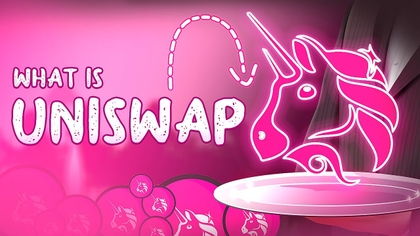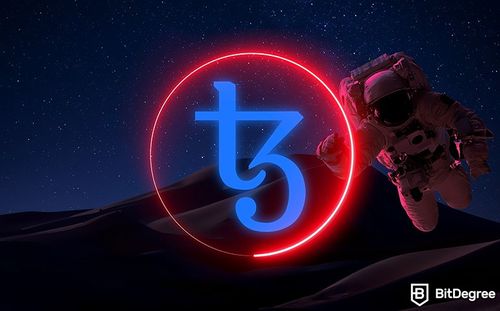Stop overpaying - start transferring money with Ogvio. Sign up, invite friends & grab Rewards now! 🎁
Tezos Ecosystem Sees Growth Driven by NFTs
The Tezos network has seen exponential growth in the past year, thanks primarily to growing interest in NFTs.
The past year has been very successful for Tezos, the open-source blockchain ecosystem. The network has seen massive growth in adoption and smart contract addresses, driven by the growing popularity of non-fungible tokens (NFTs).
The Proof-of-Stake network is one of Ethereum’s competitors in the NFT space, providing conditions for minting and trading.

Did you know?
Subscribe - We publish new crypto explainer videos every week!
What is Uniswap? (UNI Token Explained With Animation)


According to the State of the Network report published on Tuesday, February 1, by Coin Metrics, the number of transactions using smart contracts has increased exponentially over the past year. Transactions increased from less than 10,000 per day in January 2021 to over 50,000 per day a year later.
It was noted in the report that the primary force behind the growth was NFT platforms. Marketplaces like Rarible, Objkt, and FXHash are becoming increasingly popular. Furthermore, in December, the AAA video game studio Ubisoft announced Tezos-based gaming NFTs.
While Ethereum remains one of the most popular ecosystems in the NFT market, some creators aren’t fond of the high network fees and seek alternatives like Tezos. All Tezos-based NFT marketplaces are accessible on a portal in the ecosystem for considerably lower fees than Ethereum.
Tezos claims that the NFTs based on its system are carbon-neutral. This gives Tezos a big competitive advantage, as one of the biggest criticisms of Ethereum-based NFTs is their environmental impact. NFTs are minted and traded using the Proof-of-Work consensus algorithm, which requires large amounts of energy resources to process transactions.
Active addresses on the Tezos network have reached an all-time high, recorded at 45,000 at the time of writing. Active smart contracts have tripled in the past 12 months, going from 200,000 in January 2021 to over 600,000 this year. These numbers reflect the growth of Tezos-based NFTs and dApps.
The report also listed ‘other transactions’, which included the total number of daily transactions. There was a notable spike in August 2021, which corresponded with the launch of an upgrade that halved the block times. The daily transactions increased more than sixfold, from 40,000 to 250,000, where it currently steadily remains.
Based on the State of the Network report, There are over 300,000 addresses that contain at least 1 XTZ. This is yet another significant growth, having increased by 150% since January of last year.
The tracker on the Tezos platform has registered 315,047 daily transactions at the time of writing. This is significantly lower than the daily transactions on Ethereum. According to Etherscan, on February 1, it processed 1,173,199 transactions.
The proof-of-stake Tezos network was launched in 2018. Its goal is to act as an ‘energy efficient’ alternative. The native token, XTZ, reached its all-time high on October 4, 2021, when its worth was estimated at $9.12.











![How to Transfer Money Without Fees? [Animated Tips 2025] How to Transfer Money Without Fees? [Animated Tips 2025]](https://assets.bitdegree.org/youtube/crypto-finally-explained/how-to-transfer-money-without-fees-animated-tips-2025.jpg?tr=w-400)










